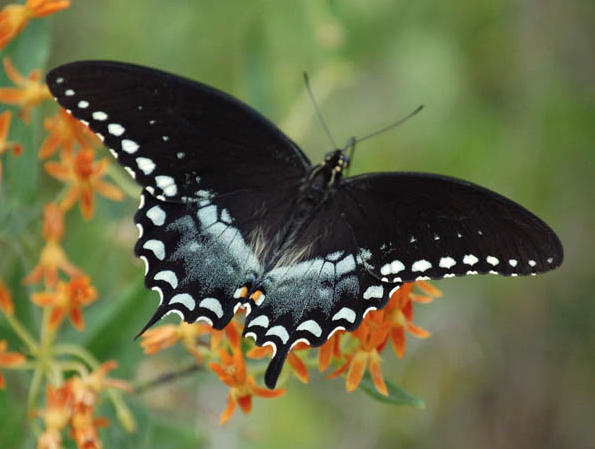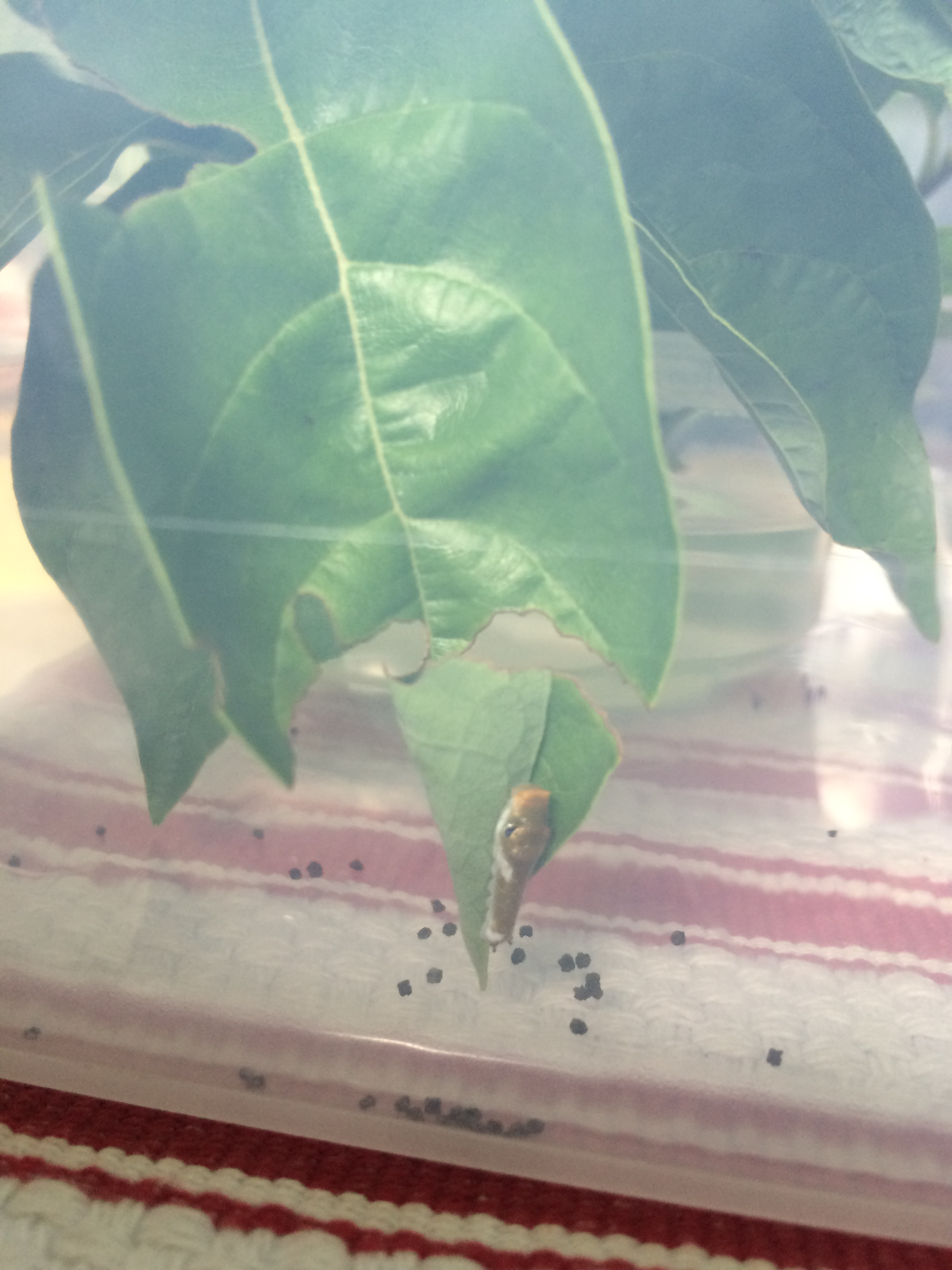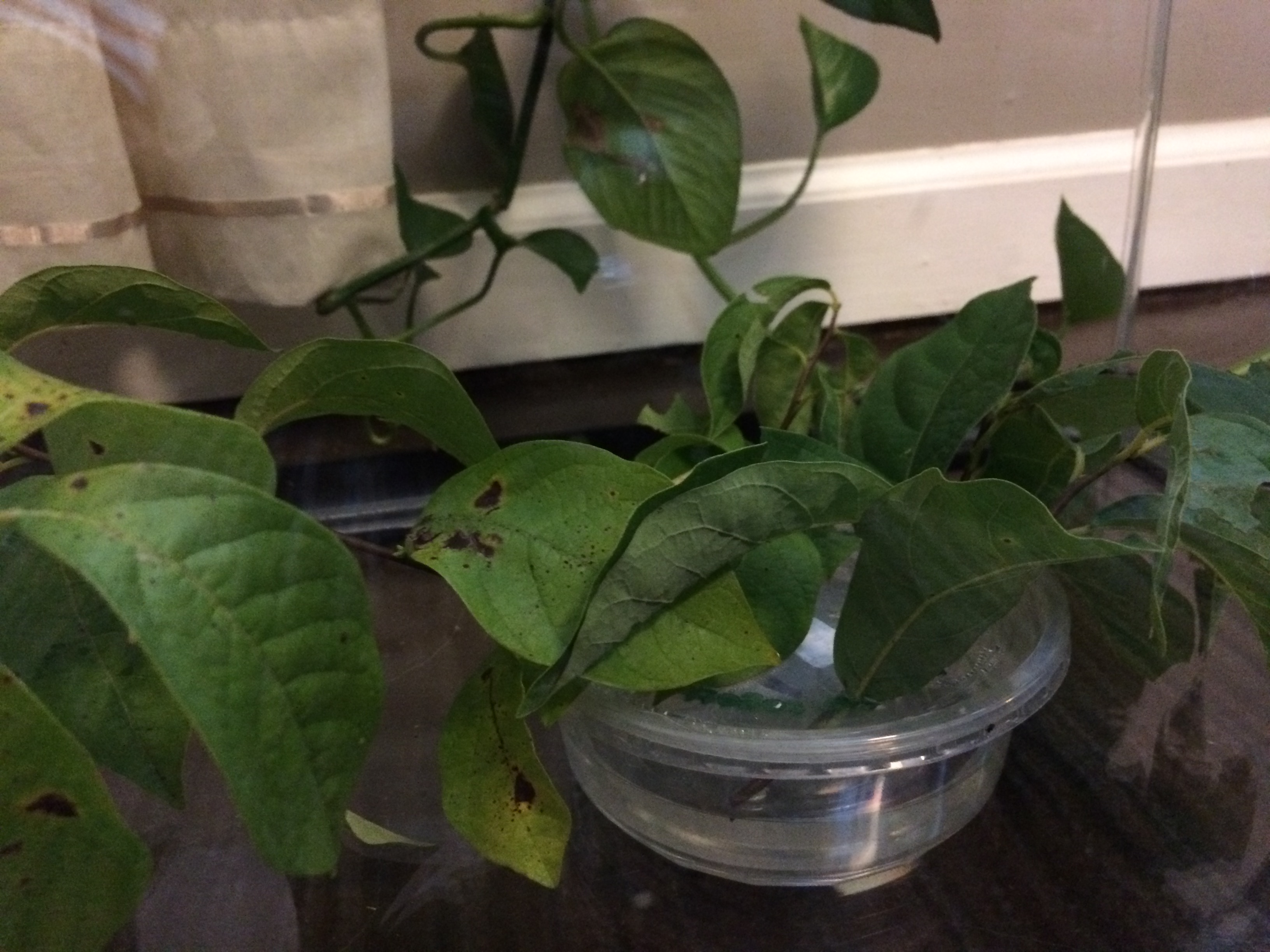Raising caterpillars to butterflies isn’t something I’ve done before, but I finally did a little research on how to go about it. About a week ago we saw a Spicebush Swallowtail flying around our 2 Spicebush shrubs. We knew it was laying eggs on the shrubs! We looked, and there they were on the underside of the leaf. I think we saw about 8 or 9 eggs.

A few days ago we looked for hatched eggs and found several spicebush swallowtail caterpillars. You can spot them by seeing the end of a leaf chewed on and folded over, or a leaf folded in half as the caterpillar gets bigger. This is its nest!
So why would you want to raise caterpillars and bring them inside your home?
Our pollinators, especially butterflies are in danger. Populations are falling drastically due to pesticides, low numbers of the native plants they need, cars, bad storms, climate change, and hungry birds and other insects! It is hard enough for pollinators to make it to reproduction stages. If a butterfly makes it to an adult and lays eggs, the struggle still isn’t over! Spiders, parasitic wasps, and some other insects will eat small caterpillars. The eggs and caterpillars can also fall victim to viruses & fungi in the environment. By bringing them inside you’re helping the probability they’ll make it into a butterfly.
We have seen many eggs and caterpillars on our native plants in the yard, but have seen many perish and only 1 make it into a butterfly. Only 90% of eggs laid make it to an adult butterfly.

After doing a little research and asking Betty Hall questions on raising caterpillars, I made a habitat out of this plastic shoe box and some tulle I had in my sewing stash. However, later that evening we went on a walk and found this perfectly good terrarium on the side of the road! Thanks universe!

To create an indoor habitat for the caterpillars, all I did was punch some holes in some plastic containers with a lid and filled with water to hold the Spicebush shrub cuttings. I took cuttings from the bush that had the caterpillars on it. I’ll put in new cuttings as these begin to wilt. I plan to just leave the old cutting in there until I see the caterpillars have moved onto the new fresh cutting.
If you plan to raise caterpillars, you need to bring the caterpillar in on its host plant. A host plant is what the caterpillar has to eat in order to grow. Big hint on what the Spicebush Swallowtail needs: Spicebush! (as well as Sassafrass)

Here is the stage the caterpillar is in right now. He looks like bird poo for a reason, camouflage! It looks like he has eyes, but these are to make him look like he has a big face to look defensive. Each stage the caterpillar is in is called an instar. Usually there are 5 instars. The black pebbles are his ‘frass’.

I will have an update later to see how the caterpillars are coming along!

We have seen many eggs and caterpillars on our native plants in the yard, but have seen many perish and only 1 make it into a butterfly. Only 90% of eggs laid make it to an adult butterfly.
Thank you for a nice article. In the above article , I believe 90% of eggs is a number that is too high.